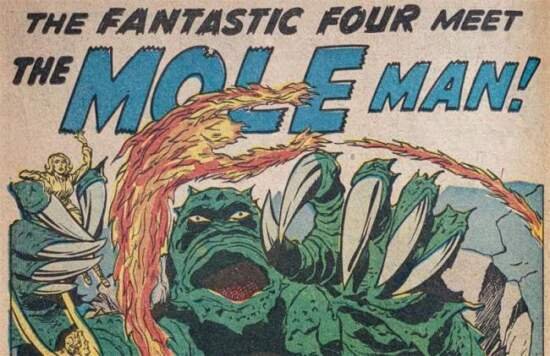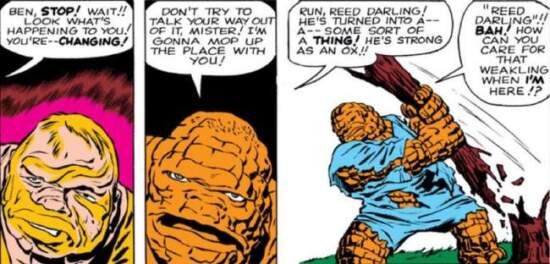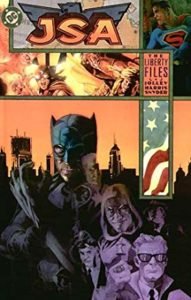Curators : Chip Kidd & Geoff Spear
Additional essays by : Tom Brevoort & Marl Evanier
Year : 2021
Publisher : Abrams Book
FF n.1
Writer : Stan Lee
Co-writer & Artist : Jack Kirby

A cavity is, apart from teeth, a hole, a space made up of nothingness which might or might not be in need of being filled. A cavity, moreover, when talking about the art of narrating, can be the name of the spaces we find between words, the empty world of white that separates two words (three, actually, if take into consideration that words are usually, although not always, found between two more); yet, in the case of comic books, cavities are the spaces between panels, those short and rhythmic moments when (or, more geographically, where) we as readers are supposed to come up with the missing link between an action and the next. We let the eyes move from our left to our right, and then downwards, repeating the same pattern (or, in case of Asian comics, the horizontal direction is the opposite), finishing our session when we reach not just the final page, nor the final panel, but the very last piece of our own writing system (a full stop, usually, in the last balloon) or the very last image that tries to insinuate itself onto our retina, silence here being necessary.
Yet, the act of demystification, of destabilization in regards to the natural flow of reading as a continuous action, would mean respecting these cavities as barriers per se, that is, a change in how we see them as requiring us to keep going, so that we start thinking abuot them as natural impediments, the borders of worlds that can (which does not mean they must) work as independent islands.
A comic book, then, becomes an archipelago dotted by panels that can be focused on for a deeper analysis, an act that normally seems more fitted to the comic book historian (the kind of historian, that is, who is interested in the artistic aspect of the work he or she is studying). Fantastic Four 1 – Panel by Panel represents here this kind of painstaking effort to turn the pages of the original comic inside out, by approaching the book from the point of view of those who want to pay respect to the aforementioned cavities and by so doing highlight the swift and awe-inspiring beauty of the art (Jack Kirby’s).
Divided into three main sections, each one consisting of a different length (tens of pages for the panels, a few for the commentaries, and a bit less than thirty for the issue in its entirety and in its original form), Messrs Kidd and Spear’s work possesses a quality that makes us wonder how comics should actually be read. By blowing up panels, the resulting experience is not that of having a better grasp of the story (something difficult to do), rather of making apparent what each stroke of Mr Kirby’s pencil tried – and managed – to convey.

As odd as it might sound, what we are being given here is a long session of (inner) discovery, not dissimilar to what a psychologist does when trying to have us work out and bring to the surface what our subconscious is trying to tell (about) us. The mastery of Kirby creation is therefore not just the mastery of someone who knows what sequential art is supposed to be, but also that of someone who knows why a character is supposed to bend his head a bit to the left so that the final experience that is being transmitted to the reader is such that the goal of making the story feel alive is achieved.
There’s a disturbing element, then, in such a work of art, with “disturbing” here meant in its original sense of interfering with the normal flow of events. It’s art talking about art, a world (Mr Kirby’s) inside another world (Messrs Kidd and Spear’s magnificent treatment of the panels), linked to the historical moment of a comic book that, unknowingly, when it finally hit the stands would turn the world of comic books not simply upside down but also inside out.
The cavities of the original issue (original is here also used to refer to Mr Kidd’s intelligent decision of using a copy from 1961) are then used as boundaries that allow for a better understanding of what dwells inside their borders, and as cavities remind us of the word “caves”, so are we led into the depth traced by the pencil (and the ink, and the colour, and the lettering), mirroring the fantastic quartet’s adventure inside planet Earth, with monsters trying to jump out of underground tunnels (or out of the pages right into our imagination) and a hint of psychological fuzziness trying to erase the border between good and bad (is the Thing actually good, is our Mole-Man actually evil?).

